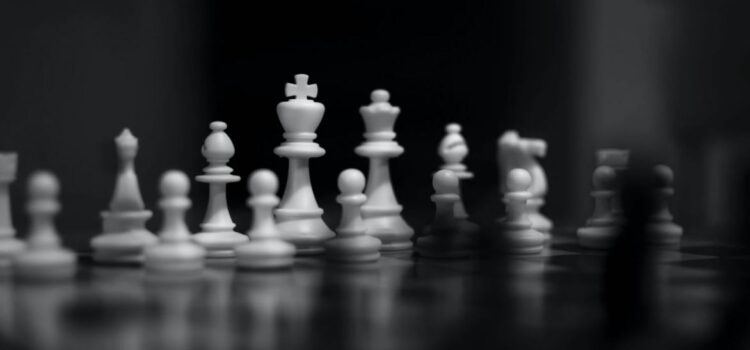

This article is an excerpt from the Shortform book guide to "Peak" by Anders Ericsson. Shortform has the world's best summaries and analyses of books you should be reading.
Like this article? Sign up for a free trial here .
What is a mental representation? Why is creating a mental representation the key to reaching peak performance?
Mental representations are templates that correspond to objects, ideas, or anything else that the brain might be thinking about. The key to peak performance is developing efficient and effective mental representations.
Keep reading to learn more about mental representations and how you can use them to improve performance in almost any area of expertise.
In the Mind’s Eye
Human beings are meaning-making creatures. We strive to find order, coherence, and narrative amid the jumble of information we are confronted with every day. By giving the world meaning, we are able to process and make sense of what would otherwise be a baffling barrage of inputs and sensations. We know what flowers or blades of grass are when we encounter them because we have set ideas of what those things are. It is through harnessing the power of these mental representations that you can begin to unlock the vast, untapped potential of your mind.
We see this with verbal memory. It is very difficult to memorize a random jumble of words. But when these same words are arranged into a grammatical and logically coherent sentence, most people are able to easily recite it back. This is because the sentence gives us a mental representation of the content within it: it provides context and meaning, which aids in memory. This ability to recognize meaningful patterns underlies the success of some of the world’s peak performers.
Creating a Mental Representation
What are mental representations? At their most basic, mental representations are templates that correspond to objects, ideas, or anything else that the brain might be thinking about. You may not realize it, but you use mental images every day. Think about a famous image, like da Vinci’s Mona Lisa. When someone mentions it, you can “see” the painting in your mind’s eye—this is a mental representation. They are pre-existing patterns that are held in long-term memory, enabling us to overcome the limitations of short-term memory.
Mental representations provide meaning and context that aids us as we assimilate and process information. Language itself is a complex network of mental representations, with words (which are abstract) representing real-world things. A word like dog, when a child first hears it, means nothing: it’s just a catch-all label for something that shares a set of common characteristics (i.e., dogs are furry, they walk on all fours, and pant).
(Note: Mental representations are closely related to the psychological concept of schemas, which are cognitive shortcuts that help us interpret and organize information. If we stick with the “dog” example, schemas explain why young children who are just learning to use language might call a cat a “dog”: they have developed a schema which tells them that dogs have fur and walk on all fours, thus they might put all such phenomena into their “dog” schema.)
But when the child learns more about dogs, she incorporates all this information into the word. When she hears it spoken, she no longer needs to search her memory to find all the relevant information about dogs: she has developed a full mental representation of what they are.
The key to peak performance is developing efficient and effective mental representations. But they are highly context-specific. The mental representations used by chess masters to envision the board and map out their opponents’ possible moves wouldn’t translate to a completely different game, like basketball. There are no “general skills.” When you practice, you are getting better at a specific thing: you’re becoming a better pole vaulter or basketball player, not a better all-around athlete.
Top performers are so good at what they do because they have superior mental representations. Years of practice have changed the circuitry in their brains, enabling them to create highly detailed and effective mental representations, aiding in memory, pattern recognition, and all the other highly developed abilities needed to be a top-ranked pitcher, chess player, or pianist.
Seeing the Pattern
A key part of forming good mental representations is the ability to recognize patterns where others see only random and formless data. Most of us are only seeing a collection of trees: experts see the forest.
In one experiment, the author and some colleagues showed soccer players video footage from a soccer match and then asked them to predict what was going to happen next on the field. The results showed that the more accomplished players were more accurate in their predictions of what the next move would be than were the less accomplished players participating in the experiment. The better players were able to take a full assessment of the conditions on the field and see patterns that enabled them to predict what the optimal next move would be. They had a mental representation of which players’ movements mattered the most, to whom they ought to pass the ball, and so on.
The same mental representations allow the most effective quarterbacks in American football to lead their teams to victory. They spend a great deal of time analyzing the video from previous games and from opponent’s games, seeking out patterns of play that will provide valuable information for the next match on the gridiron. This practice enables the quarterback to have a full picture of events on the field and allows him to make good decisions quickly.
This is because people have better mental representations—and therefore, greater comprehension—of subjects in which they are already knowledgeable. To someone who doesn’t understand soccer or American football, the action on the field seems like just a jumble of players running around. But to a skilled player, the play on the field fits into a neat pattern, from which they can make accurate judgments and predictions.
Indeed, skill/knowledge and mental representations reinforce one another: the more skilled or knowledgeable you are in a given subject, the more effective your mental representations will be, and vice versa.
Alekhine and Blindfold Chess
The story of Russian chess master Alexander Alekhine shows how mental representations can drive extraordinary performance. In 1924, Alekhine played simultaneous games of chess against 26 opponents over a 12-hour period. He won 16, lost five, and played to a draw in another five. This record was remarkable, given how many factors he had to keep in mind at once—26 boards, 832 individual pieces, and 1,664 individual squares. This was “blindfold” chess: a game in which one of the players does not have the board in front of them, and must make all their moves and strategic calculations from memory.
How could this be possible? Through mental representations. Alekhine had developed the ability to visualize the entire chessboard in his memory and move the pieces around in his head. Interestingly, becoming a blindfold chess master was never his main focus. He had an early interest in chess as a child and had been purposefully practicing the game his entire life, taking on greater challenges and defeating stronger and stronger opponents.
Alekhine’s aptitude for blindfold chess grew out of this purposeful practice in standard, non-blindfold chess. Like many chess masters, his abilities in blindfold chess were a product of the years of experience he had in the game: because he knew it so well, he had the ability to draw an extraordinary mental representation of a chessboard in his mind and game out all the possible moves and countermoves he and his opponent could make—without even looking at the board.
Creating the Framework Using the Mental Representation
Effective mental representations also explain much of the difference between good writers and mediocre ones. Most adults write during the course of a normal day, whether it’s a business memo or an email or a social media post. But expert writers employ very different methods from novices. Most novice writers simply write down all their ideas on a topic onto the page, with little organization or logic. It’s called “knowledge telling,” because it’s mainly just telling the reader whatever is in your head.
This is not what expert writers do. Experts, instead, employ mental representations. They start with an idea of what they want a piece of writing to accomplish, as well as the concepts and ideas they want to explore. Then, they sketch out or outline the basic skeletal structure of what they want to write. From there, they fill in the details and finer points within that outline.
Crucially, they also update or modify that outline when it proves to be ineffective. Indeed, this is a hallmark of all experts and peak performers. They constantly monitor and evaluate their performances, so that they can adjust their mental representations to make them more effective.
Building Expertise
Mental representations aren’t just the results of expertise, as in the case of Alexander Alekhine. They are also effective tools for building that expertise in the first place. One study of beginner music students showed just how effective mental representations can be.
The researchers were measuring the degree of improvement that each student achieved, based on the number of mistakes they made on their instrument from one practice session to the next. There was some variety in the students’ performances—some continuously improved, while others seemed to reach plateaus, where they made the same mistakes repeatedly. As all of the students were clearly motivated to improve, the researchers concluded that the difference was in the quality of their mental representations: how effectively they “heard” the musical pieces in their minds.
The internationally known pianist Gabriela Imreh has a similar process when she is trying to master a new piece of music. She develops an “artistic image” of the piece, a representation of what it ought to sound like when she plays it. She derives this “artistic image” from reading the sheet music. After she creates her mental representation, she does the hard work of playing the piece until it fits the “image” of it in her head.
Having such a mental image also gives her a complete “roadmap” of the music, which enables her to experiment spontaneously with it and add her own interpretations, because she knows she can always find her way “back.” Her extensive knowledge and mental representation gives her the ability to not only perform the basic task, but also to add new variations and points of connection.

———End of Preview———
Like what you just read? Read the rest of the world's best book summary and analysis of Anders Ericsson's "Peak" at Shortform .
Here's what you'll find in our full Peak summary :
- How to become an expert in any field you choose
- Why practice isn't enough because you need to change how you practice
- Why natural talent isn't enough and practice is more important






